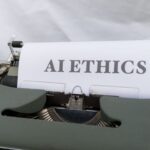Safeguard your manuscript against suspected data fabrication and image duplication

Case: While reviewing an author’s manuscript, our publication expert made the following observations:
1. The study documented a novel surgical procedure that was complicated and had high animal mortality. Such research is usually done on a large number of animals (to account for animal death during the procedure), and at the end, the experimental groups have unequal numbers. However, in this specific study, the number of animals was uniform in all groups. This seemed a highly improbable result, and the author needed to explain how this was possible.
2. Two figures appeared to have been taken from the same slide. Both images had the same cellular distribution, which was unlikely because the paper mentioned both slides as having been stained with two different antibodies.
Action: Our publication expert communicated his concerns to the author and intimated him of the possible problems that might occur if the paper was submitted in its present form.
Regarding the first issue, we explained that the results might look fabricated. We asked the author to clarify how all the groups have the same number of animals. We recommended the manuscript should include a clear explanation of how he arrived at these numbers so that the journal does not suspect his data. He came back with a detailed clarification in which he provided a detailed breakup of the numbers in each animal group and separately provided the number of animals that died during the course of the experiment.
With regards to our second observation about figures, we explained that the author could be suspected of image manipulation. We asked him to check the original image data files and if possible, replace the current image with a different one that conveys the finding accurately without raising any suspicion of image manipulation. The author replaced the image with another one that looked fine.
Summary: Data fabrication and image manipulation are considered to be violations of ethical standards of publication.
The Office of Research Integrity (ORI) defines fabrication or falsification of data as research misconduct:
(a) Fabrication is making up data or results and recording or reporting them.
(b) Falsification is manipulating research materials, equipment, or processes, or changing or omitting data or results such that the research is not accurately represented in the research record.
Most journals have clear policies about how they deal with cases of fabrication or image manipulation. For instance, all Nature Publication Group (NPG) journals have outlined clear policies with regard to plagiarism and fabrication as well as image integrity and standards. If instances of misconduct related to these issues are detected, the author is asked for an explanation, and in case no explanation or an unsatisfactory explanation is provided, the author’s institute is informed and an investigation carried out. In case of a published research, the paper is often retracted. Such cases of misconduct can jeopardize a researcher’s career. Authors should, therefore, read the journal policies and guidelines about these issues very carefully and strictly follow them. Wherever possible, supplementary material and data should be provided to avoid any chances of suspicion.




